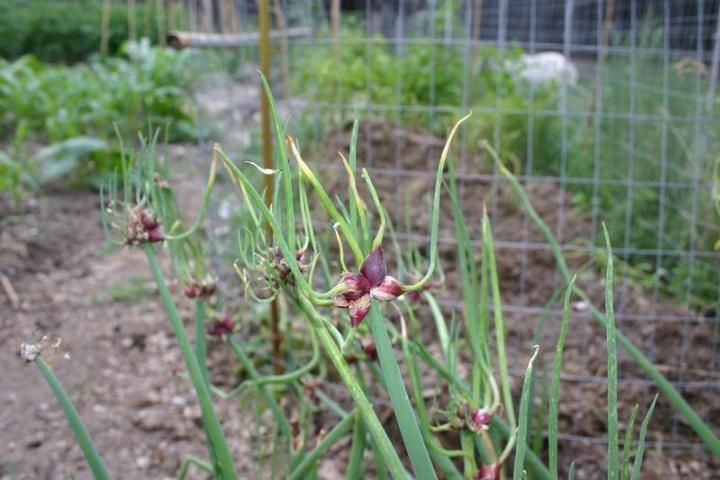Onion, Tree—Allium cepa L. (Proliferum group)1
Tree onion is also called Egyptian onion, Egyptian tree onion, top onion, and perennial onion. A variety commonly grown in Florida is listed in seed catalogs as 'Red Egyptian Topset'.
Description
As the names imply, the top bears the bulb, bulbils, or bulblets, instead of flowers and seeds. No bulb forms at the base of the stem, but several offsets are produced there. Otherwise the tree onion plant resembles a green onion plant or, more closely, a shallot. Rocambole, a topsetting garlic, is similar, but it has flat leaves instead of the hollow leaves of tree onion.

Credit: Dave Whitinger, CC BY-SA 3.0
Culture
Tree onion plants are best grown as annuals. Best results will be obtained if started in the fall, but winter and spring plantings give fair results.
Start the plants using either top bulblets or the lower offsets. The lower offsets are used most often. Prepare the soil and plant the sets just as for regular onions. Barely cover the tops of the sets with soil. Space rows 1 foot apart and plants 3 to 6 inches apart within each row.
Tree onion is sometimes referred to as walking onion, for as the stem weakens the top bends to the ground allowing the bulbils to root several inches away from the main plant.
Use
Both the base of the stem and the top bulblets can be used. The plant can be pulled and the base of the stem used before the bulblets and offsets form. A top bulblet may be used as soon as it develops to an edible stage. Top bulblets are most often pickled but may be used as green scallions.


